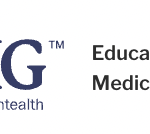Ask a medical school dean anywhere in the world and they’ll admit that their periodic medical school accreditation assessment is one of the most time-consuming, tiresome, and stressful events in their multiyear calendar. “Bureaucrats” from the accrediting authority drop a voluminous self-assessment document in the dean’s inbox, and expect a highly-detailed response within a few months.

Conducting the self-assessment requires major organization, endless committee meetings, gathering up widely-dispersed data, actually communicating with students -while consuming hours of time of overworked academic and administrative staff.
All this, to confirm to the accrediting authority that the school is doing its job.
Accreditation is a cumbersome event; not only does it sap energy and resources, but the outcome is never certain. It is a test of the medical school, its infrastructure, and the dean’s management.
The Accreditor’s Perspective
From the standpoint of the accreditation authority however, the process has a different objective.
Yes, they want to see that the school is functioning effectively, but there’s much more than that.
Accreditors usually regulate several schools within their jurisdiction. They cannot oversee all of them all of the time, so their system is designed to ensure that:
- The schools are meeting the accreditor’s minimum Standards
- The schools truly understand and acknowledge their deficiencies and weaknesses
- They are prepared to work to rectify them
- They have a mechanism that strives for continuous assessment and improvement
This is what the accrediting authority is really looking for when assessing the schools within its jurisdiction.
Standards and Medical School Awareness
The Accrediting Authority should have in place a regular procedure for updating its Standards for Medical Education. This is necessary because of continuous societal changes and developments. Examples include lessons learnt from the COVID 19 pandemic, or the ever-increasing pace of technology. Standards should be updated where new knowledge or priorities emerge. (Each jurisdiction has its own rules about Standards maintenance.)
The accreditation process is often the vehicle that brings revised standards to the knowledge of medical schools.
The Global Context
The description above examines the purpose of accreditation within a specific jurisdiction. However, it is also used very effectively within a global context, to enhance medical education around the world. A future blog post will explain how this is done.

